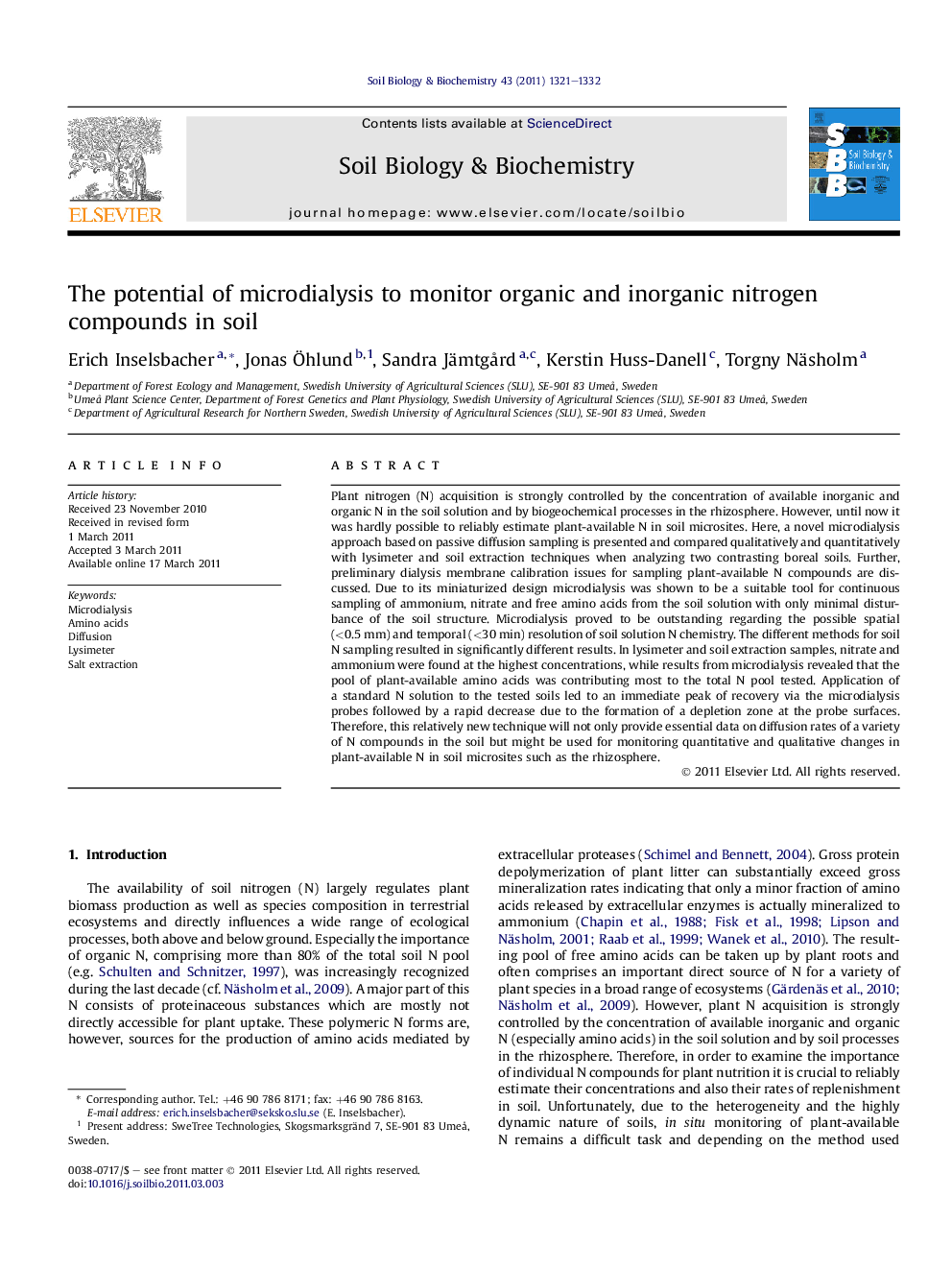| Article ID | Journal | Published Year | Pages | File Type |
|---|---|---|---|---|
| 2025309 | Soil Biology and Biochemistry | 2011 | 12 Pages |
Plant nitrogen (N) acquisition is strongly controlled by the concentration of available inorganic and organic N in the soil solution and by biogeochemical processes in the rhizosphere. However, until now it was hardly possible to reliably estimate plant-available N in soil microsites. Here, a novel microdialysis approach based on passive diffusion sampling is presented and compared qualitatively and quantitatively with lysimeter and soil extraction techniques when analyzing two contrasting boreal soils. Further, preliminary dialysis membrane calibration issues for sampling plant-available N compounds are discussed. Due to its miniaturized design microdialysis was shown to be a suitable tool for continuous sampling of ammonium, nitrate and free amino acids from the soil solution with only minimal disturbance of the soil structure. Microdialysis proved to be outstanding regarding the possible spatial (<0.5 mm) and temporal (<30 min) resolution of soil solution N chemistry. The different methods for soil N sampling resulted in significantly different results. In lysimeter and soil extraction samples, nitrate and ammonium were found at the highest concentrations, while results from microdialysis revealed that the pool of plant-available amino acids was contributing most to the total N pool tested. Application of a standard N solution to the tested soils led to an immediate peak of recovery via the microdialysis probes followed by a rapid decrease due to the formation of a depletion zone at the probe surfaces. Therefore, this relatively new technique will not only provide essential data on diffusion rates of a variety of N compounds in the soil but might be used for monitoring quantitative and qualitative changes in plant-available N in soil microsites such as the rhizosphere.
► Microdialysis is a passive, diffusion-based, non-disruptive sampling technique. ► Different techniques (dialysis, lysimeter, extraction) sample different N fractions. ► Microdialysis allows studying soil N pools at high spatial and temporal resolution. ► Plant-available organic and inorganic N compounds can be estimated by microdialysis. ► Microdialysis allows monitoring changes of N concentrations in the rhizosphere.
